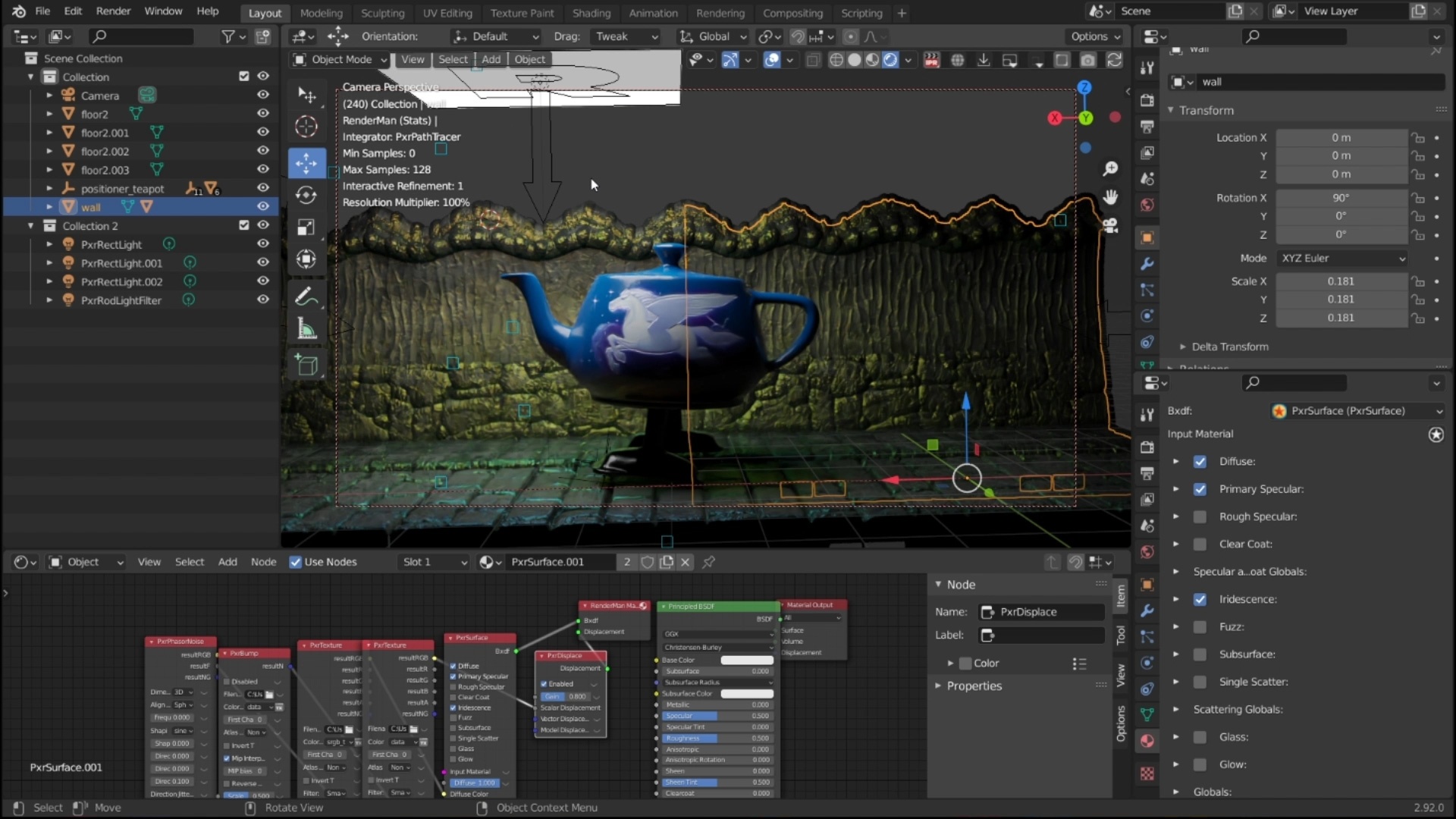

This puts our memory consumption at render time at around 1.1GB That all said, let's look at the actual quality of the results across the renders. The hands, legs, pelvis, head, hair, and blaster pistol all come with 2k PBR texture sets, and the body has a 4k PBR texture set. This puts the final vertex count for our scene at 151, 751 there are 151k polys with 303k tris. For reference, the scene is comprised of relatively low-poly base meshes which are then set to Subsurf Division level 3 for the viewport, and 4 for the final render. This is because Renderman currently has no GPU Acceleration support, so rendering took place all on the CPU.

Renderman took close to an hour, while Cycles and Iray on average clocked in at under 5 minutes for this scene. The first thing to note is that the render times out of Renderman are orders of magnitude slower than in Cycles or Iray. Let's look at the results from Renderman, Cycles, and Iray. Because Cycle's materials are node based and so customisable, it's harder to make direct comparisons to Renderman or Iray, however I believe my PBR shader is a good analogue to their physically based solutions, and since it's built with the industry standard Metal/Roughness workflow in mind, the same texture maps were used across all shaders in all render engines. I set the IOR value to 1.6, as this is what I found most closely resembled the results of the PxrDisney shader. In Cycles I was using my own PBR Shader solution which I've had available for several months now, and just recently improved the Fresnel accuracy, roughness, and IOR controls for. I set each render engine up to render at 4096x2560px in order to get a good amount of detail to examine the results, and had them render at 128 samples this is the default for Renderman and leaves enough grain in the final image to see how each render engine handles noise.įor Iray, I didn't have much in the way of options for light or materials, but I matched the HDR I used for the other tests the rest of the material handling seems to be piped straight from Substance Painter.įor Renderman I was using the default PxrDisney shader this is Pixar's own Physically Based shading solution which they've been using since around 2012. To try and make the testing as fair as possible I tried to keep the scenes as similar as I could.


 0 kommentar(er)
0 kommentar(er)
